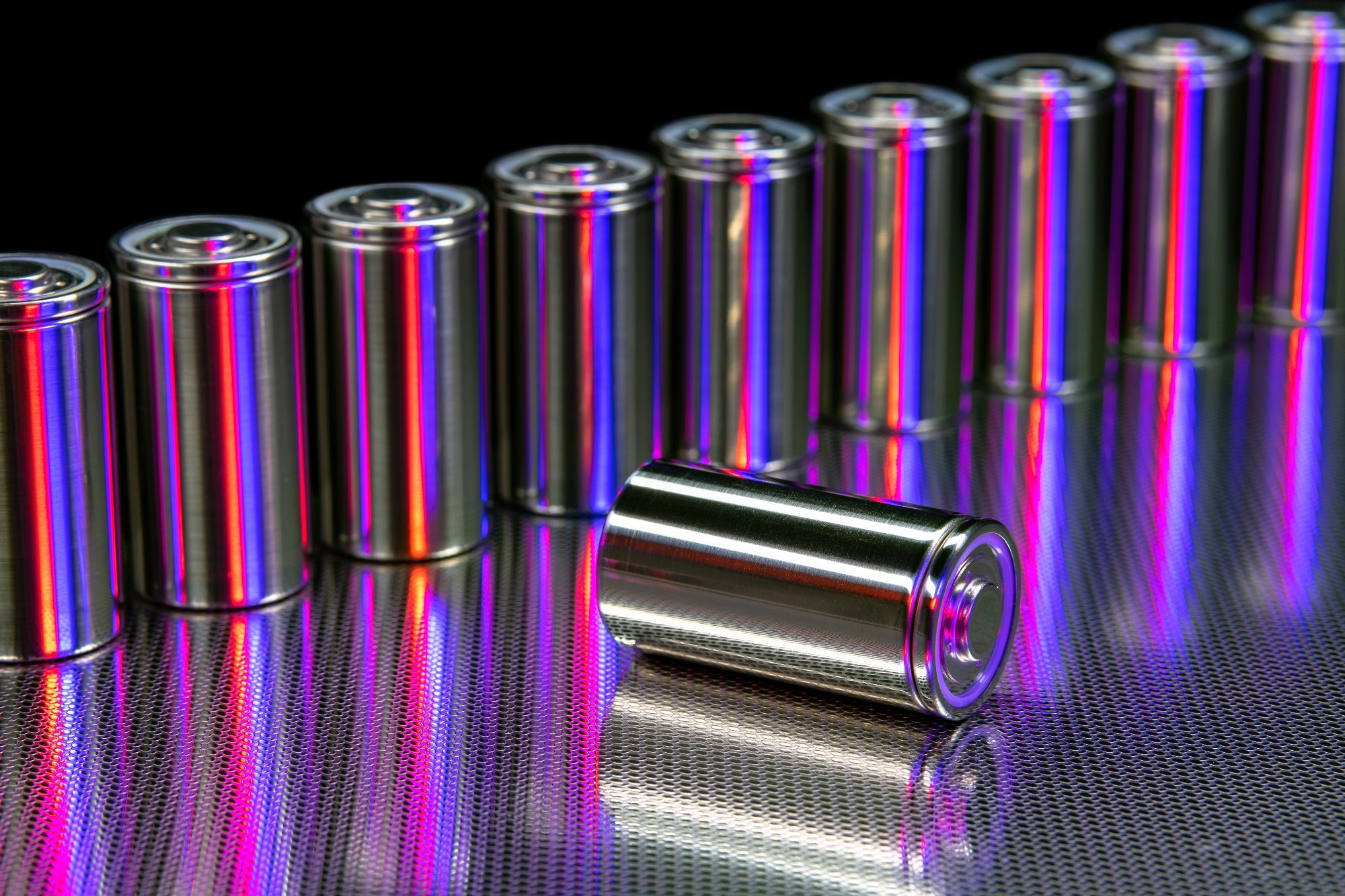Researchers have used metal-organic frameworks to engineer higher-performing lithium-ion battery cathodes. Their findings offer improved stability, conductivity, and energy density across several key materials.

Image Credit: Troggt/Shutterstock.com
A recent study published in Materials Features explores how metal-organic frameworks (MOFs) can serve as both templates and precursors in the synthesis of cathode materials for lithium-ion batteries. The research team systematically classified traditional cathode types, introduced MOF-based synthesis strategies, and evaluated the electrochemical performance of the resulting materials.
The findings demonstrate that MOFs offer precise control over morphology and structural characteristics, addressing longstanding limitations in conventional cathode synthesis. This molecular-level engineering could impact the development of more durable and energy-efficient batteries.
Cathode Materials
Lithium-ion batteries are central to modern portable electronics and electric vehicles, largely due to their high energy density and long operational life. As global energy is beginning to transition towards more renewable sources, there is growing pressure on battery technology to meet the rising demands for efficient, high-capacity storage.
Cathode materials play a critical role in determining battery performance, influencing energy density, cycle life, voltage range, and safety. Most lithium-ion battery cathodes fall into one of three structural categories: layered oxides such as lithium cobalt oxide (LiCoO2), spinel materials like lithium manganese oxide (LiMn2O4), and polyanion olivine compounds including lithium iron phosphate (LiFePO4).
There are reasons to choose each of these options, and reasons to avoid them. Layered oxides often suffer from phase instability, spinel materials struggle with electronic conductivity, and olivine compounds can exhibit sluggish lithium-ion transport. These challenges have prompted researchers to look for new approaches to cathode fabrication.
MOFs as Cathode Synthesis Templates
MOFs are crystalline materials composed of metal ions coordinated with organic ligands. They're renowned for their tunable porosity and structural flexibility. Here, the researchers used MOFs as scaffolds to create advanced cathode materials in a two-step process.
First, they synthesized MOF templates via hydrothermal or solvothermal reactions. These templates were then thermally converted in the presence of lithium sources to form the final cathode compositions.
This method allowed precise control over particle size, surface morphology, and chemical composition. Carbon coatings produced from the MOF ligands frequently incorporated nitrogen, which enhanced electrical conductivity and stabilized the interface between the electrode and the electrolyte. At the same time, doping with transition metals such as nickel, manganese, or aluminium helped to mitigate structural degradation during cycling and improved long-term stability.
Thermal treatment also generated oxygen vacancies, facilitated partly by mechanisms like the Kirkendall effect, which promoted ionic and electronic transport within the cathode material. However, these vacancies need to be finely tuned, as their excessive formation can lead to performance degradation.
Overall, the compositional and structural flexibility offered by MOFs enabled tailored enhancements to layered, spinel, and polyanion cathode materials, improving their durability and electrochemical efficiency.
Performance Gains Across Cathode Types
The study found that MOF-mediated synthesis led to performance improvements across all three main cathode categories when compared to conventional methods. In layered cathodes, MOF-derived LiCoO2 and ternary layered oxides demonstrated higher cycling stability, improved rate capabilities, and elevated operating voltages. One example involved a nitrogen-doped carbon-coated LiCoO2 cathode that maintained a reversible capacity of 171.1 mAh g-1 after 200 cycles at 1 °C, indicating strong performance retention.
For spinel cathodes, introducing oxygen vacancies and heteroatom-doped carbon coatings significantly improved conductivity and extended cycle life. An oxygen-deficient LiMn2O4 sample retained over 90 % of its capacity after 1000 cycles at 10 °C, showcasing high durability and efficient ion transport.
Olivine cathodes also experienced substantial improvements. MOF-derived LiFePO4 composites achieved high rate performance and maintained capacities above 160 mAh g-1 over several hundred cycles, reflecting enhanced structural integrity and long-term reliability. The results of the study indicate the potential of MOF-derived cathodes to deliver superior energy density, stability, and rate performance compared to traditionally synthesized materials.
Download your PDF copy now!
This could be extended beyond lithium-ion batteries. The principles of this MOF-mediated synthesis may be applicable to other battery technologies, such as sodium-ion and potassium-ion systems. The ability to customise structure and composition at the nanoscale provides a powerful toolkit for designing next-generation electrode materials across a wide range of chemistries.
Even better, by improving both energy density and cycling stability, MOF-enhanced cathodes could significantly strengthen the performance of batteries used in electric vehicles and grid-scale storage systems. These materials could help support the wider integration of intermittent renewable energy sources into modern power infrastructures.
What's Next?
Despite their promise, MOF-derived cathode materials must overcome some obstacles before they can be scaled for commercial applications. Manufacturing processes must become more cost-effective and environmentally sustainable. Simplifying syntheses while maintaining performance will be essential for industrial adoption.
Further research is also needed to better understand lithium storage mechanisms and the structural evolution of these materials during cycling. Advanced characterization tools could help clarify these processes, guiding the rational design of future MOF-based electrodes.
Turning lab-scale breakthroughs into practical technologies will depend on stronger collaboration between researchers and industry. As research into MOF chemistry advances, it could offer an interesting way to improve cathode design and enhance overall battery performance.
Journal Reference
Chen, L., et al. (2025). The progress and promise for metal–organic framework-mediated synthesis of lithium-ion battery cathode materials. Materials Features, 032101 (4). DOI: 10.1088/2752-5724/ade9e3, https://iopscience.iop.org/article/10.1088/2752-5724/ade9e3
Disclaimer: The views expressed here are those of the author expressed in their private capacity and do not necessarily represent the views of AZoM.com Limited T/A AZoNetwork the owner and operator of this website. This disclaimer forms part of the Terms and conditions of use of this website.